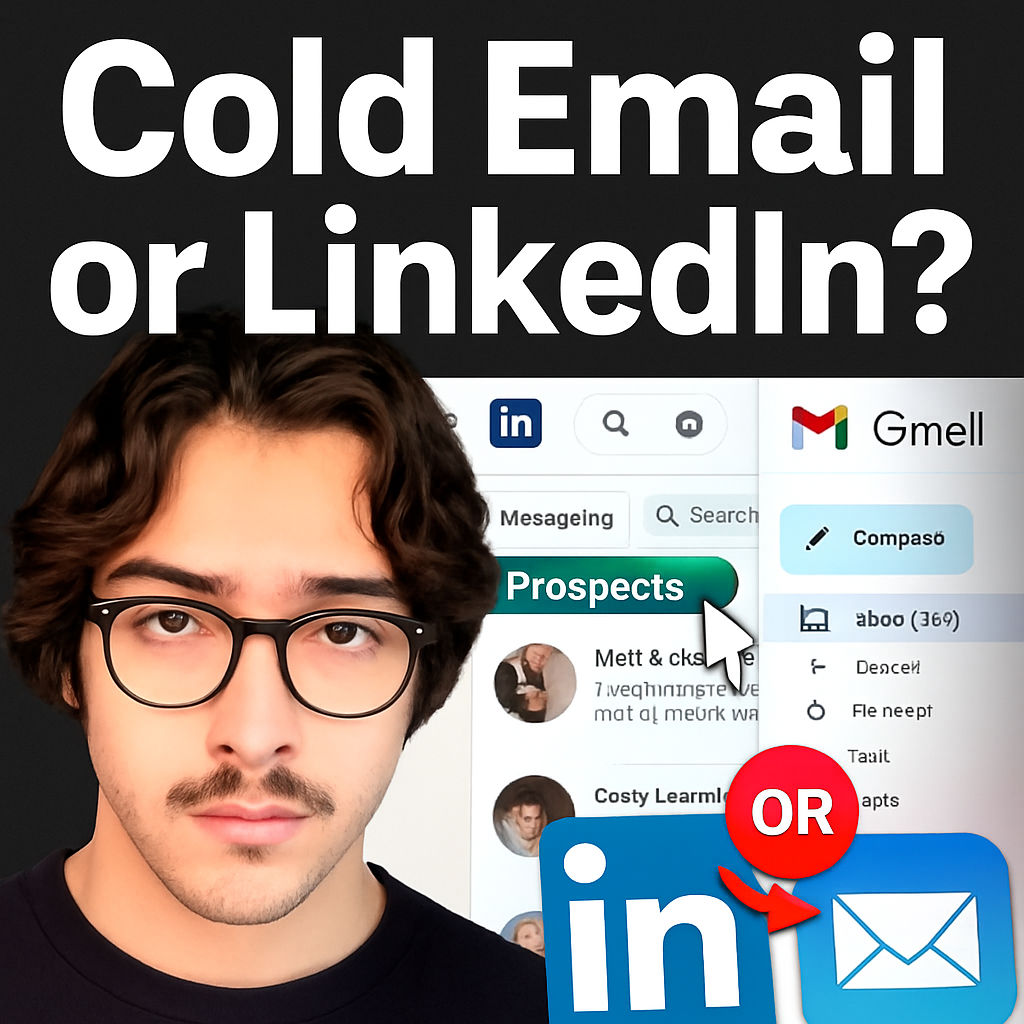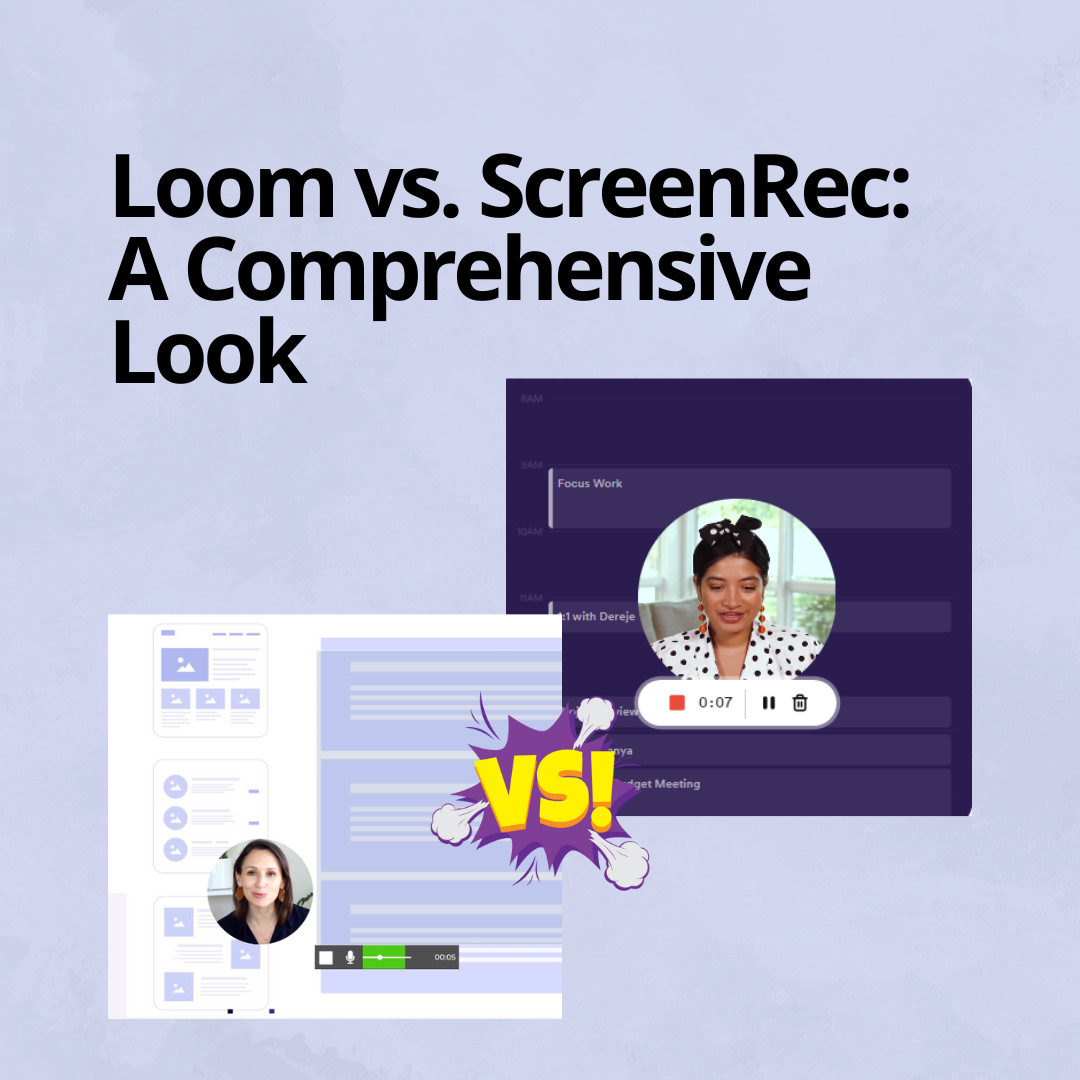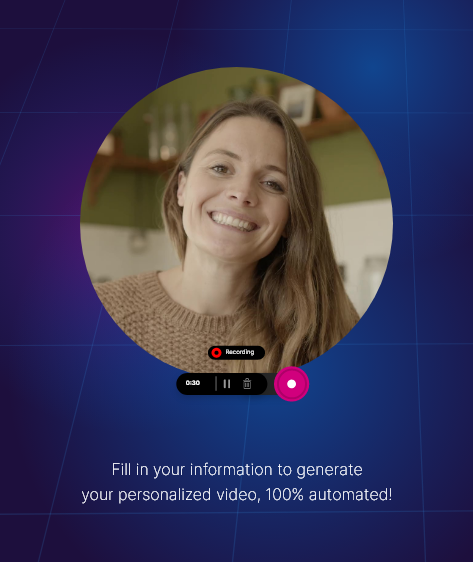Cold outreach remains one of the most effective ways to generate quality B2B leads, book meetings, and drive revenue—even in a world where buyers are more discerning than ever. Two of the most powerful channels for B2B prospecting are cold email and LinkedIn outreach. But which strategy will deliver better results for your business? In this article, you’ll get an expert breakdown of the pros, cons, and nuanced use cases for both cold email and LinkedIn outreach, based on firsthand experience sending millions of emails and thousands of LinkedIn DMs. Whether you want more meetings on your calendar or aim to build lasting business relationships, understanding the right channel—and how to blend them—can be a game-changer for your sales team’s pipeline.
Based on the original video:
Comparing Cold Email vs LinkedIn Outreach for B2B Lead Generation
Before diving into the detailed breakdown, here’s why this distinction matters: the primary topic keyword—cold email vs LinkedIn outreach—captures a critical decision point for B2B teams. Each channel offers unique advantages and challenges, affecting cost, scalability, reply rates, and risk. Let’s explore the factors that determine which approach fits your goals, budget, and target audience.
Cost and Scalability: Email Wins on Volume
If your objective is maximizing the number of prospects you reach every day, cold email stands out for its cost-effectiveness and scalability. Here’s how the math breaks down:
- Daily Output: Safely, you can send around 20 cold emails per day per email account. While technical limits (like Gmail’s 2,000 daily send cap) exist, exceeding recommended thresholds quickly leads to spam issues and account trouble.
- LinkedIn Limitations: The platform allows roughly 200 connection requests per week per account, which works out to about 20 per day—similar to email at face value.
- Scaling Complexities: Setting up multiple LinkedIn profiles is tedious and risky, requiring different IPs, warmup activities, and profile credibility management. Accounts can be flagged or banned if detected as automated or inauthentic.
- Cost Per Account: Purchasing or renting pre-warmed LinkedIn accounts can cost anywhere from $20 to $99+ per month per account, compared to under $10/month for a Google Workspace email account—or even less on private servers.
- Automation Tools: Email automation platforms typically charge a flat fee (e.g., $99/month can support dozens of sending accounts). In contrast, LinkedIn automations charge per seat, meaning the cost multiplies for each account used in outreach.
Result: At scale, email is dramatically less expensive and simpler to multiply—making it the channel of choice for high-volume, campaign-driven outbound strategies. Running a thousand LinkedIn connection requests daily would cost thousands versus a fraction of that for cold email.
Time and Tech Investment
The true “cost” of outreach isn’t just platform or tool fees—it’s also your time preparing accounts, handling warmups, and managing risk. Email systems let you spin up new accounts quickly and absorb account bans with minimal hassle. With LinkedIn, each new profile requires significant hands-on work and entails more risk of identity or account loss.

Conversion Rates: LinkedIn Delivers Higher Engagement
While cold email wins on total volume, LinkedIn shines in engagement and reply rates—especially in boutique or highly targeted markets. The difference is striking:
- Cold Email Replies: Expect a 1%-2% reply rate on emails sent. For every 1,000 emails delivered, 10-20 replies is standard, though the quality and intent of these replies can vary based on list quality and offer relevance.
- LinkedIn Replies: With accepted connection requests, you can see reply rates of 10-20% or higher. This is because the platform is inherently social—prospects can view your profile, see shared content, and verify your credibility before responding.
On LinkedIn, even a simple, non-pitchy message can result in prospects proactively asking about your services or initiating a conversation. This is rare via cold email, where directness is necessary but can be off-putting if not personalized.
Quality vs. Quantity and Market Considerations
It’s essential to match channel strategy to your audience size and behavior. If you’re after a wide market of SMB decision-makers, cold email’s relentless reach is vital. But if you’re working a rarefied or C-suite pool, LinkedIn’s higher trust and conversational flow yield better individual results.
For highly saturated market segments, combining cold email’s volume with LinkedIn’s quality touchpoints unlocks a multichannel advantage. This hybrid approach is particularly effective in complex B2B sales cycles, nurturing prospects across touchpoints and platforms.
Lead Coverage: Email’s Universal Reach
One of the key advantages of cold email is its universal applicability. Nearly everyone—from Fortune 500 CEOs to local business owners—has and checks an email address. This is less true for LinkedIn, particularly among blue-collar industries, local service businesses, or small contractors who may not manage a LinkedIn profile—or ever check it.
Targeting the right audience is crucial. If your focus lies on industries or roles underrepresented on LinkedIn, email is your best bet. For SaaS, consultants, or knowledge workers, however, both channels provide solid potential.
Adding to this, people often check their inboxes more regularly than their LinkedIn DMs. While LinkedIn’s visibility can be higher when a message is seen, there’s no guarantee your prospect even logs in regularly.
Pitching Styles: Conversational vs. Direct
A major benefit of LinkedIn outreach is the ability to take a more conversational, less direct approach. On LinkedIn, you can open with a light, personalized message that fosters genuine networking—sometimes prompting the prospect to ask about your services before you even pitch. This softer touch lets you add potential leads to your network and nurture them over time as they see your posts.
Cold email requires a more direct approach—introduce yourself, state your value, and clearly present your offer. While this suits high-intent outreach, it lacks LinkedIn’s social warmth and capacity for passive nurturing.

Network Building and Content Leverage
LinkedIn’s ecosystem lets you build ongoing visibility. Once someone accepts your request, they’re exposed to your thought leadership, posts, and engagement—behaving almost like a newsletter subscriber. Over time, this increases familiarity and trust, boosting future response rates and conversions.
Risk and Deliverability: Email Offers Flexibility, LinkedIn Builds Trust
Another crucial difference is the risk landscape and deliverability factors associated with each channel:
- Email Risk: Email operates on an open protocol, not tied to a single private company. If a cold email account gets blocked or flagged—especially if you’re not using your primary domain—the impact is minor. Accounts are cheap and easily replaced, making high-scale campaigns low-stress on the platform level.
- LinkedIn Risk: Most impactful outreach happens from your real (main) account, as fake or automated profiles face quick bans or skepticism. Suffering a block or ban on your main professional profile, however, can have far-reaching consequences.
Email Deliverability Challenges
The major “con” for cold email is deliverability. Poor setup, spam words, or including links and images can send your carefully crafted message straight to spam. Ensuring your emails reach inboxes—not promotions or junk folders—requires careful technical diligence.
If your outreach relies on links or multimedia, LinkedIn is superior. A message sent post-connection is almost certain to be seen, making it the platform of choice for delivering assets, demo videos, or event invitations.
For more on ensuring inbox placement, see this guide to preventing emails from going to spam. It covers best practices for configuration, content, and warmup to avoid common deliverability pitfalls.
Summing Up: Which Channel Should You Use?
To recap, the strengths and weaknesses of each prospecting channel depend on your specific needs and market:
- LinkedIn: Higher conversion rates, trust, and ability to nurture relationships. Best for small, niche, or skeptical audiences where a network-driven approach wins.
- Cold Email: Unmatched scale and lead volume, low cost per send, and easy account management. Critical for high-output sales teams and broader target lists.
If your goal is maximum pipeline generation, cold email will deliver the broadest and fastest impact. When reach and volume matter most, let email be your backbone channel.
However, in many cases the best approach is not “either/or”—but “and.” For specialized segments or where trust-building is paramount, supplement broad cold emailing with targeted LinkedIn nurturing. This multichannel cadence maximizes both volume and reply quality, giving each prospect a personalized experience and multiple paths to convert.

Combining Cold Email and LinkedIn for Maximum B2B Results
The most successful B2B outreach systems—in agencies, SaaS, consulting, and beyond—use cold email for initial contact and LinkedIn for deepening relationships. Start with broad email outreach to reach the full universe of potential leads. When a prospect replies or engages, connect on LinkedIn to move from inbox to network, opening the door for ongoing visibility and faster conversion.
- Initial Outreach: Use cold email for mass contact and quick qualification.
- LinkedIn Nurture: Connect with email responders on LinkedIn, send relevant content, and build trust over time.
- Long-Term Pipeline: Leverage LinkedIn’s content and networking tools to turn warm prospects into clients—even after the initial campaign ends.
For a step-by-step playbook on how to build multichannel B2B pipelines, check out this article on the Halo Funnel strategy. It details how LinkedIn and cold email can work hand-in-hand, maximizing both your reach and your reply rates.
Key Takeaways: Cold Email vs LinkedIn for B2B Outreach
- Email is unbeatable for scale, cost, and reach—ideal for pipeline generation at volume.
- LinkedIn delivers higher conversion rates on smaller, targeted lists with a more personal touch.
- To maximize booked meetings and revenue, start with email, but always leverage LinkedIn to nurture qualified prospects for higher conversion.
- Risk is lower on email accounts; LinkedIn bans can be more consequential if tied to your real profile.
- For outreach strategies involving multimedia or links, LinkedIn offers better deliverability and visibility.
FAQ
Which channel, cold email or LinkedIn, is best for large-scale lead generation?
Cold email is the preferred channel for large-scale lead generation due to its cost-effectiveness, ease of scalability, and ability to reach almost any prospect with an email address. While reply rates may be lower, the high volume ensures a steady pipeline.
Does LinkedIn have a higher conversion rate than cold email?
Yes, LinkedIn messages typically see much higher conversion (reply) rates than cold emails, especially after a connection request is accepted. This is due to the platform’s social nature, trust signals, and conversational messaging format.
What are the biggest risks of scaling outreach on LinkedIn?
The main risks include account flags or bans, especially if using automated tools or fake profiles. Losing your main LinkedIn account hurts trust and long-term network-building, so automation should be used cautiously, and real profiles are preferred.
How can I improve my cold email deliverability?
Follow technical best practices such as domain warmup, using clean lists, minimizing links and images in the body, and monitoring your sender reputation. For a comprehensive guide, see our recommended resource above.
Should I use both cold email and LinkedIn together?
Absolutely. The most effective B2B outreach strategies use cold email for initial discovery and LinkedIn for relationship nurturing, maximizing both reach and reply quality.









